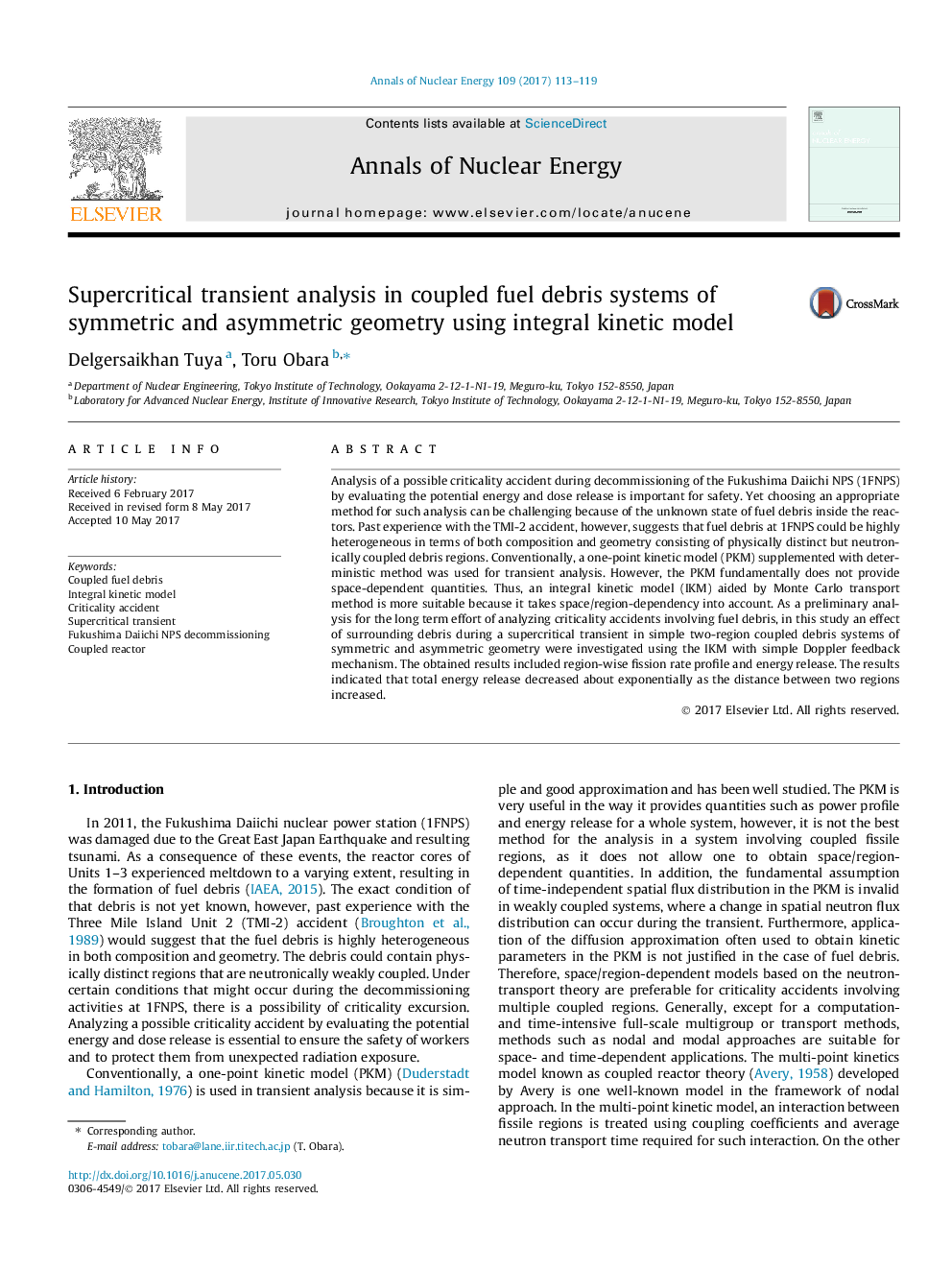| Article ID | Journal | Published Year | Pages | File Type |
|---|---|---|---|---|
| 5475035 | Annals of Nuclear Energy | 2017 | 7 Pages |
Abstract
Analysis of a possible criticality accident during decommissioning of the Fukushima Daiichi NPS (1FNPS) by evaluating the potential energy and dose release is important for safety. Yet choosing an appropriate method for such analysis can be challenging because of the unknown state of fuel debris inside the reactors. Past experience with the TMI-2 accident, however, suggests that fuel debris at 1FNPS could be highly heterogeneous in terms of both composition and geometry consisting of physically distinct but neutronically coupled debris regions. Conventionally, a one-point kinetic model (PKM) supplemented with deterministic method was used for transient analysis. However, the PKM fundamentally does not provide space-dependent quantities. Thus, an integral kinetic model (IKM) aided by Monte Carlo transport method is more suitable because it takes space/region-dependency into account. As a preliminary analysis for the long term effort of analyzing criticality accidents involving fuel debris, in this study an effect of surrounding debris during a supercritical transient in simple two-region coupled debris systems of symmetric and asymmetric geometry were investigated using the IKM with simple Doppler feedback mechanism. The obtained results included region-wise fission rate profile and energy release. The results indicated that total energy release decreased about exponentially as the distance between two regions increased.
Keywords
Related Topics
Physical Sciences and Engineering
Energy
Energy Engineering and Power Technology
Authors
Delgersaikhan Tuya, Toru Obara,
